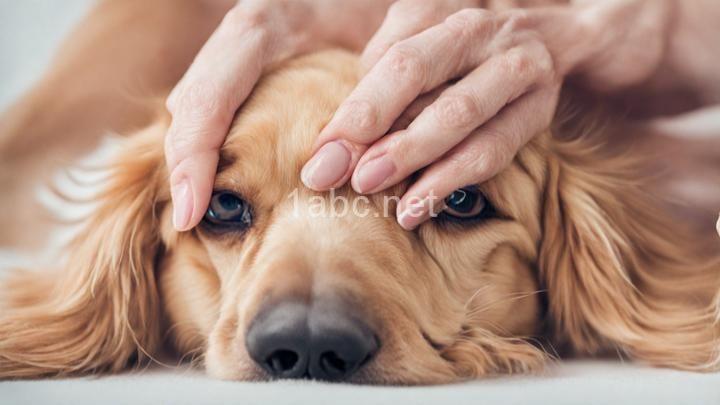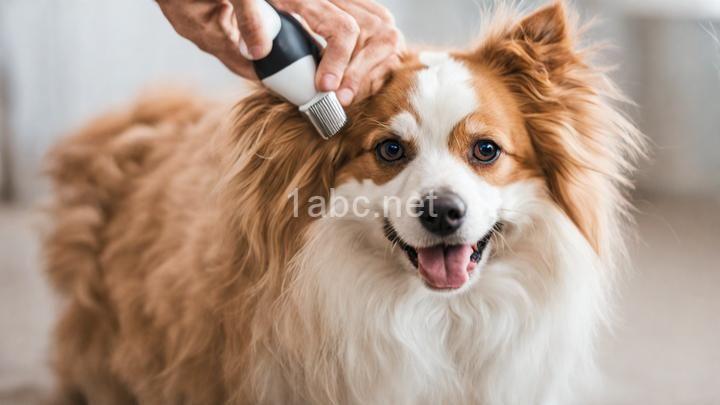Understanding the Anatomy of Your Pet's Nails for Safe Trimming

Introduction:
Welcome, pet owners! We are thrilled to share valuable information about pet nail care with you. Taking care of your pet's nails is not just about aesthetics, but also about their overall health and well-being. In this blog post, we will delve into the fascinating world of pet nail anatomy and provide you with essential tips for safe and effective trimming. So, let's get started!
I. The Basics of Pet Nail Anatomy
A. Composition of the Nail
To understand how to safely trim your pet's nails, it's important to know what they're made of. A pet's nail consists of two main parts: the hard outer shell, which is composed of a protein called keratin, and the softer inner quick, which contains blood vessels and nerves. The keratin provides strength and protection to the nail, while the quick supplies it with nutrients.
B. Layers of the Nail
Did you know that each nail has several layers? The outermost layer is the most durable and helps to protect the nail from wear and tear. As your pet's nails grow, the outer layers gradually shed, revealing fresh, healthy nail growth underneath.
C. Quick Identification
Identifying the quick is crucial to avoid causing pain or injury to your pet during nail trimming. In light-colored nails, the quick is usually visible as a pinkish area towards the base of the nail. However, in dark-colored nails, it can be more challenging to identify. In such cases, the quick may appear as a darker area within the nail. Exercise caution when trimming dark-colored nails to avoid cutting into the quick.
II. Different Types of Pet Nails
A. Dog Nails vs. Cat Nails
It's important to note that dog and cat nails differ in various aspects, such as shape, thickness, and coloration. Dog nails are generally thicker and more curved, while cat nails are thinner and sharper. Additionally, cat nails are retractable, meaning they can be extended or retracted at will. Understanding these differences will help you tailor your trimming techniques accordingly.
B. Small Breeds vs. Large Breeds
Nail characteristics can also vary among different sizes of dogs and cats. For instance, small breed dogs and cats tend to have thinner and more delicate nails, while large breed dogs may have thicker and stronger nails. Keep these differences in mind when selecting the appropriate tools and techniques for trimming your pet's nails.
III. Tools for Safe and Effective Nail Trimming
A. Nail Clippers or Trimmers
When it comes to trimming your pet's nails, you have several options, including nail clippers or trimmers. There are different types available, such as guillotine-style clippers, scissor-style clippers, and plier-style clippers. Each type has its pros and cons, so it's essential to choose one that you feel comfortable using and that suits your pet's nail size and shape.
B. Grinding Tools
If you're not a fan of clippers or if your pet's nails are particularly thick, you may consider using grinding tools. Electric grinders gently file down the nail, gradually reducing its length. This method can be less stressful for both you and your pet, as it eliminates the risk of accidentally cutting into the quick. However, it's important to introduce your pet to the sound and sensation of the grinder gradually, so they become accustomed to it.
C. Other Essential Tools
In addition to clippers or grinders, there are a few other tools that can make the nail trimming process smoother. Styptic powder or cornstarch can be used to stop bleeding if you accidentally cut into the quick. It's always better to be prepared for any mishaps that may occur.
IV. Step-by-Step Guide to Safely Trim Your Pet's Nails at Home
A. Preparing Your Pet
Creating a calm and comfortable environment is essential before you begin trimming your pet's nails. Find a quiet space where you and your pet can relax. Familiarize your pet with the sensation of having their paws handled by gently touching and massaging their paws regularly. This will help them feel more at ease during the nail trimming process.
B. Choosing the Right Technique
Once your pet is comfortable with paw handling, it's time to choose the right technique for trimming their nails. If you opt for clippers, hold them correctly to ensure a steady grip. Make sure to take small, controlled cuts to avoid cutting into the quick. If you're using a grinder, hold it at the appropriate angle and apply gentle pressure while gradually filing down the nail.
C. Trimming Process
Start by trimming or grinding a small portion of the nail at a time. This helps you avoid cutting into the quick and allows your pet to adjust to the process gradually. Take breaks if needed, and offer treats or positive reinforcement to reward your pet for their cooperation. Remember, patience is key!
D. Post-Trimming Care
After trimming your pet's nails, check for any signs of distress or bleeding. If you accidentally cut into the quick and bleeding occurs, apply styptic powder or cornstarch to stop the bleeding. Make sure to clean your tools thoroughly after use to maintain hygiene and prevent the spread of bacteria.
Conclusion:
Congratulations! You've now gained a deeper understanding of your pet's nail anatomy and the importance of safe and effective trimming. By following the step-by-step guide provided, you can confidently trim your pet's nails at home while ensuring their comfort and well-being. Remember, it's essential to take your time, be patient, and seek professional help if you're unsure or uncomfortable with the process. Thank you for your dedication to your pet's health and happiness.
FREQUENTLY ASKED QUESTIONS
Why is it important to understand the anatomy of my pet's nails before trimming them?
Understanding the anatomy of your pet's nails before trimming them is crucial for several reasons. First and foremost, it helps ensure the safety and well-being of your furry friend. By familiarizing yourself with the structure of their nails, you can avoid accidentally cutting too close to the quick, which can cause pain, bleeding, and potential infection.Additionally, knowing the anatomy of your pet's nails allows you to identify any abnormalities or issues that may require veterinary attention. For example, if you notice overgrown nails or ingrown nails, understanding the anatomy can help you address these problems promptly and seek appropriate treatment if necessary.
Furthermore, being aware of the anatomy of your pet's nails can help you trim them correctly and effectively. Different animals have unique nail structures, and knowing the specifics for your pet's species can ensure that you trim the nails to an appropriate length, preventing discomfort and potential injury.
Overall, taking the time to understand the anatomy of your pet's nails before trimming them is essential for their health and well-being. It allows you to approach nail trimming with confidence, ensuring a positive experience for both you and your beloved pet.
What are the main parts of a pet's nail?
The main parts of a pet's nail include the nail bed, the quick, and the hard outer shell of the nail. The nail bed is the soft tissue underneath the nail that provides nourishment to the nail as it grows. The quick is the sensitive area within the nail that contains blood vessels and nerves. It is important to avoid cutting into the quick when trimming a pet's nails, as it can cause pain and bleeding. The hard outer shell of the nail is composed of keratin and protects the underlying structures. Trimming a pet's nails regularly helps prevent them from becoming too long and causing discomfort or other issues.
How can I identify the quick in my pet's nails?
To identify the quick in your pet's nails, you can follow these steps:
-
Begin by examining the nail closely. The quick is a pinkish area within the nail that contains blood vessels and nerves. It is usually visible in lighter-colored nails, while it may be harder to see in darker-colored nails.
-
If your pet has long nails, you may need to gently trim a small portion of the nail to expose the quick. Be cautious not to cut too close to it, as it can cause pain and bleeding.
-
Look for a small dark dot within the nail. This is an indication of the quick's location. It's important to note that the quick extends from the base of the nail to the tip, so take care when trimming or filing your pet's nails.
-
If you are unsure about the quick's location or are uncomfortable trimming the nails yourself, it is always best to consult with a professional groomer or veterinarian. They have the expertise to handle the task safely and efficiently.
Remember, it's crucial to be patient and gentle when dealing with your pet's nails. Regular maintenance and proper nail care can help ensure their comfort and prevent any accidental injuries.
What happens if I accidentally cut into the quick?
If you accidentally cut into the quick while trimming your pet's nails, there may be some bleeding and your pet may experience pain. The quick is the sensitive part of the nail that contains blood vessels and nerves. Cutting into it can be uncomfortable for your pet and may cause them to pull away or yelp.To stop the bleeding, you can apply styptic powder or cornstarch to the affected area. These powders help to clot the blood and stop the bleeding. You can also use a clean cloth or tissue to apply gentle pressure to the area for a few minutes. If the bleeding doesn't stop or if you notice any signs of infection, it is important to contact your veterinarian for further guidance.
It's important to be cautious when trimming your pet's nails to avoid cutting into the quick. If you are unsure about how to trim your pet's nails properly, it's always best to seek advice from a professional groomer or your veterinarian. They can show you the correct technique and provide guidance to make the process safer and less stressful for both you and your pet.
